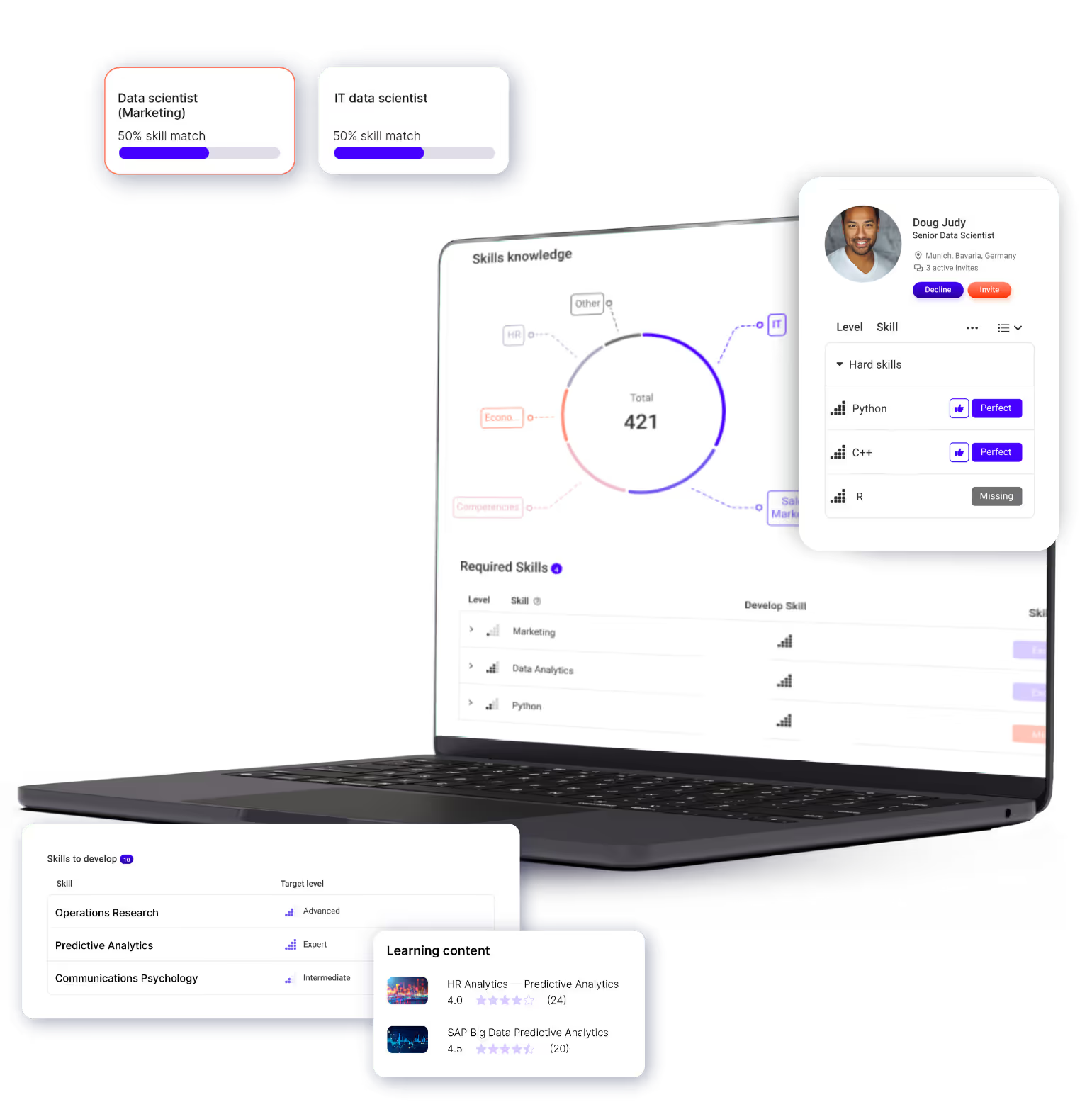Automate repetitive tasks
Time and labor costs shouldn’t be wasted on repetitive, manual tasks when there are technologies that can easily step in. Quantify the potential for task automation on a per-role basis, uncover specific technologies that handle those tasks well, and allow your employees to focus on the work that drives engagement and revenue.
Model the results of automation efforts
Implementing technologies can be a big time and spend commitment. Before you act, model automation scenarios with strategic workforce planning tools to quantify their impacts on workforce demands and business drivers (production volume, sales volume, service time, etc.). This strategy helps to validate or disprove expected monetary upside, time savings, and increases customer satisfaction.


Identify AI-adjacent skills for maximized results
As AI begins to handle its very own workloads, the technology still needs human support. Our Job and Skills Architecture tools helps you discover the AI-adjacent roles and skill sets that allow for the implementation and maintenance of these new technologies. Without AI-skilled talent, automation systems won’t run efficiently, and uncertain role requirements will have employees duplicating efforts and randomly pitching in where they don’t necessarily know how.
Upskill to meet automation needs
If your workforce doesn’t already possess the skills necessary for automation implementations, Skills and Career Marketplace offers ample development opportunities. Outline changing or expected skill requirements, benchmark individual, department-, and company-wide skills against those requirements, and receive training recommendations to close potential gaps. Additionally, a mentor network and project staffing marketplace allow employees to jump headfirst into learning and flexing new skills.

Transform Workforces with Predictive AI Data Analysis
Explore how predictive AI delivers actionable labor market insights, identifies critical skill gaps, and manages data-driven workforce planning strategies.

Prepare for the future of work
Our solutions identify the future skills and technologies your industry will need, making it easier to design clear and practical employee development plans.
400-800 million
jobs could disappear by 2030. Remove obsolete roles and redeploy your workforce's skill sets in meaningful ways with workforce transformation tools.
150+ million
new jobs will be developed via AI by 2030. Prepare your workforce today with relevant trainings and internal hiring.
52%
of global experts expect a turbulent world by 2027, making agile, continuously skilled workforces essential for navigating disruption.

